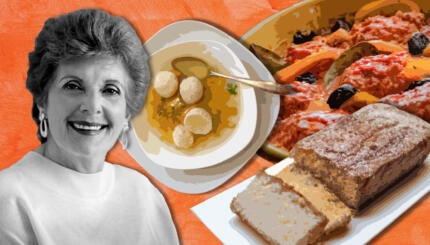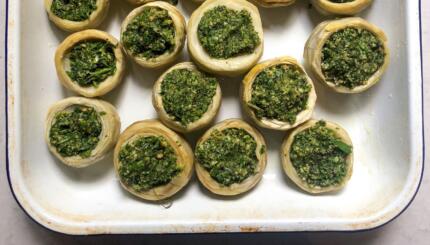My first experience at the intersection of Judaism and the LGBTQIA+ community was one morning in Sunday school, shortly before the 2008 election. Kids were making sukkah decorations and make-believe guest lists when one decided to ask about the candidates’ views and whether or not they coincided with Jewish thought. Marriage equality was brought up.
I wasn’t worried — I knew that Jews welcomed everyone — but the teacher surprised me by saying that Judaism traditionally didn’t support the LGBTQIA+ community. Little 10-year-old me, just starting to question my sexuality, was crushed. Two years later, when I had my final “I’m gay” realization — the one that pried the nail from that closet door — that memory from Sunday school made me cry. I was so worried that I would no longer be welcome in the community I loved. I turned to books for guidance, and the only one I could find about a lesbian Jew ended…in a less than ideal way. I didn’t know that acceptance was an option.
Then, I found a pamphlet at my shul that was directed at members of the LGBTQIA+ community. It was all about how there’s a place in Judaism for us, and mentioned Keshet and other organizations working for the inclusion of LGBTQIA+ Jews. I looked into Keshet and in 2014, I found myself helping to plan the LGBTQ and Ally Teen Shabbaton.
At the Shabbaton, one of the things that struck me was how desperate other teens, like me, were for LGBTQIA+ Jewish representation. In movies, in TV shows, and especially in books. A few months prior to the 2014 Shabbaton, I had written a short novel called Nice Jewish Boys, (which I recently published) about a gay Jewish boy named Avishai. It’s about him living in the closet because his father is an openly anti-gay politician. When he comes out (or rather is forced out) the book examines how he deals with his fellow students, the school administration, and his shul. Although I had written this before I came to the Shabbaton, I couldn’t figure out how exactly a school or shul different from my own would react, so my writing was unrealistic and totally made up of guesses and presumptions. In meeting kids at the Shabbaton who had gone through these things — having to deal with an unsupportive family, school, or shul environment — I changed the details in the book to reflect my friends’ lives and the things that had actually happened to them, and how they made it through.
The following year, I planned and led a workshop activity on how to come out. We had the participants role-play coming out and act out the various responses that people might have. Several of the circumstances that I used in this activity borrowed from experiences of my friends. I attended a public school and had an accepting family and shul, so before my friends shared with me the less-than-ideal reactions that people had to their coming out, I was unaware. The Shabbaton taught me about their experiences, and how they got through them. By putting them into my writing, I hope that I can help a wider audience of young people navigate their situations.
Also at that Shabbaton, I delivered a d’var Torah that was well-received, so I posted it with Keshet. It was shared hundreds of times by people all around the world, many commenting that it gave them perspective, or hope, or even inspiration. Seeing the impact that my writing could have on people, especially young LGBTQI+ people, helped me to decide that I needed to share my work with more people and provide stories of young LGBTQIA+ Jews that had love and happy endings, specifically ones that didn’t end with someone dead.
When I decided to try to get some of Nice Jewish Boys published, I had the people I’d met at Keshet and all young LGBTQIA+ Jews in mind. I wanted them to know that they were not alone, the way that I had felt at age twelve. They were not unwelcome, as I had then feared that I was. There was a place for them, as that pamphlet had made me realize.
It’s a tradition in the bible for people to answer “Hineini,” or “Here I am” when God calls to them. Writing this book was my way of saying hineini to the young Jewish LGBTQIA+ community. This was my way of saying that I am here, and that they are not alone.
sukkah
Pronounced: SOO-kah (oo as in book) or sue-KAH, Origin: Hebrew, the temporary hut built during the Harvest holiday of Sukkot.
shul
Pronounced: shool (oo as in cool), Origin: Yiddish, synagogue.


